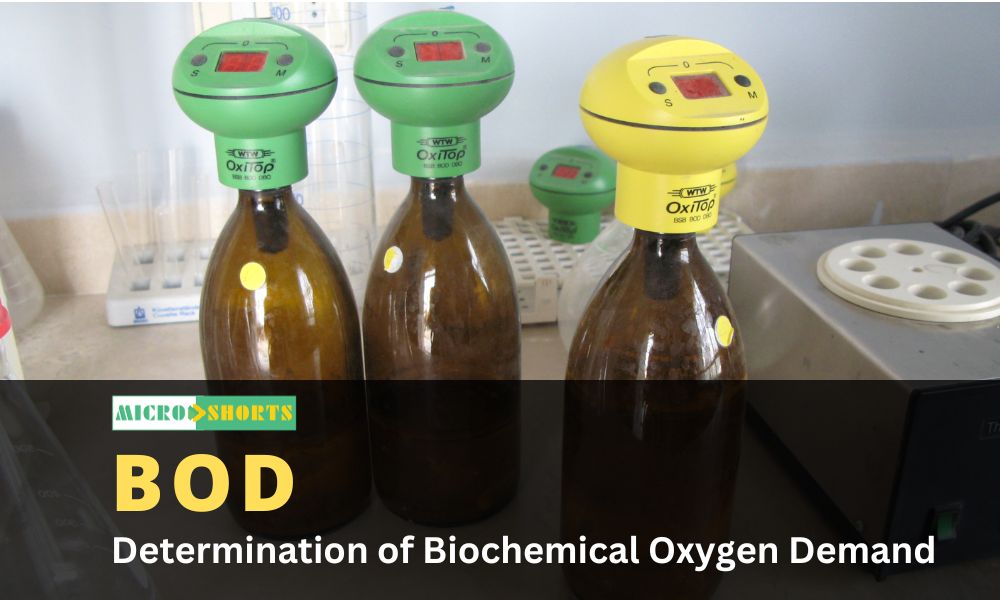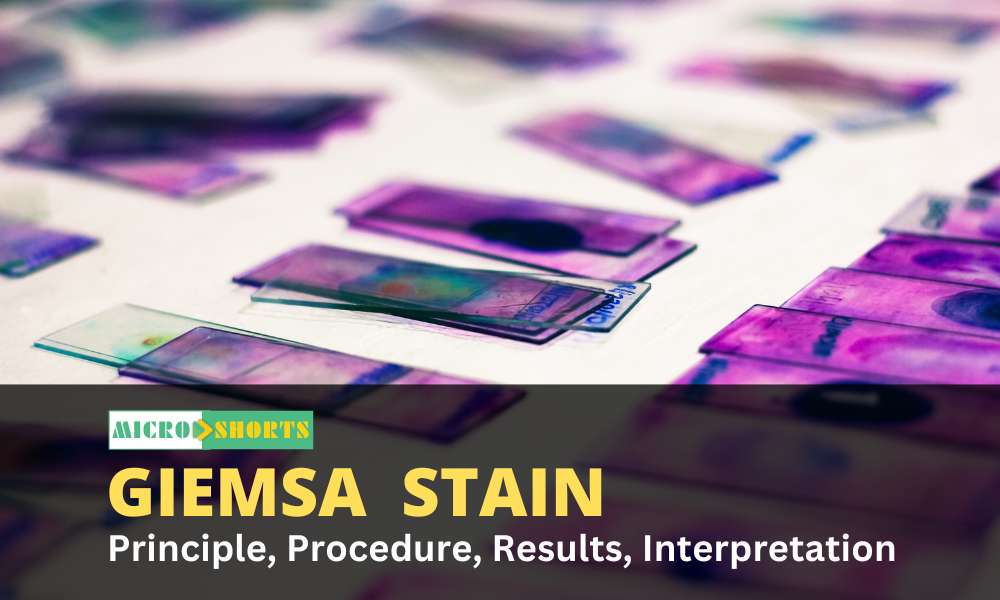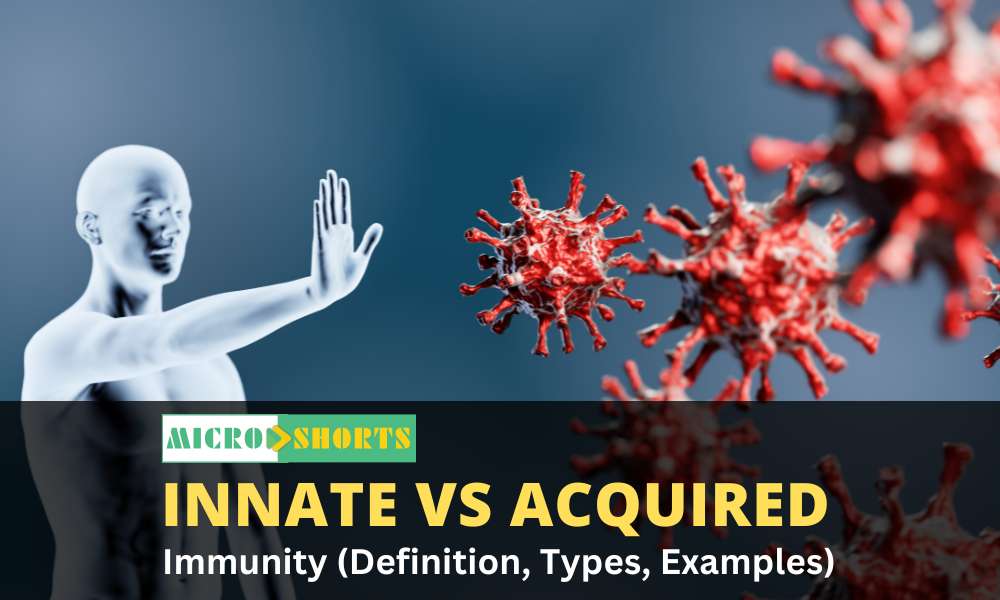Introduction
Biochemical oxygen demand or BOD is a chemical procedure for determining the uptake rate of dissolved oxygen by the biological organisms in a body of water. The method consists of filling with sample, to overflowing, an airtight bottle of the specified size and incubating it at the specified temperature for 5 days.
Dissolved oxygen is measured initially and after incubation, and the
BOD is computed from the difference between initial and final DO. In this
experiment dissolved oxygen is measured by winkler’s method.
Principle
The Winkler test is used
to determine the concentration of dissolved oxygen in water samples. . An excess of
manganese (II) salt, iodide (I-) and hydroxide (HO-) ions are added
to a water sample causing a white precipitate of Mn(OH)2 to form.
This precipitate is then oxidized by the dissolved oxygen in the water sample
into a brown manganese precipitate. In the next
step, a strong acid (either hydrochloric acid or sulfuric acid) is added to
acidify the solution. The brown precipitate then converts the iodide ion (I-)
to Iodine. The amount of
dissolved oxygen is directly proportional to the titration of Iodine with a thiosulfate solution.
Requirements
1) Water
sample to be tested.
2) Phosphate
buffer solution.
3) MgSO4
solution.
4) FeCl3
solution .
5) CaCl2
solution.
6) Six
BOD bottles.
Reagents for Winkler’s test
1) MnSO4
solution.
2) Alkali
iodide azide reagent.
3) Concentrated
H2SO4 solution.
4) 0.025
N Na2S2O3 solution.
5) Starch
indicator (2 gm%).
6) Conical
flask, burate and pipettes.
Procedure
I. Preparation of dilution water
1. Take
distilled water as per the requirement in a glass container and bubble
compressed air for 24 hours.
2. Add
1 ml of phosphate buffer, MgSO4 solution, FeCl3 solution and CaCl2 solution for
each liter of distilled water.
3. Preferably
do not store the prepared dilution water for more than 24 hours, after adding
minerals, nutrients and buffer unless dilution water blanks consistently meets
quality control limits.
II. Determination of BOD
1. If
the sample is not expected to contain sufficient bacterial population, add seed
to dilution water (2 ml settled sewage for 1000ml of dilution water or
activated sludge).
2. Neutralize
the sample to pH 7.0.
3. The
dilution of the sample is made such that residual dissolved oxygen after
incubation will not be less than 1 mg/lit. And dissolved oxygen uptake of at
least 2 mg/lit.
4. Mix
measured volume of a sample in BOD bottle with dilution water to get desired
dilution.
5. Take
six BOD bottles and number them 1 to 6.
6. Add the contents in BOD bottles as follow:
|
BOD bottle No: |
Contents to be added: |
|
1. |
Dilution water |
|
2. |
Dilution water + Measured
volume of sample |
|
3. |
Dilution water + Measured
volume of sample |
|
4. |
Dilution water + Measured
volume of sample |
|
5. |
Dilution water + Measured
volume of sample |
|
6. |
Dilution water |
Bottle No: 1 & 6 are known as dilution water blanks.
1. As
a precaution against drawing air into the BOD bottle, use a water seal by
adding water to the flared mouth of the BOD bottle.
2. Determine
initial dissolved oxygen (DO) in bottle no.1 by Winkler’s method known as DO of
blank on ‘0’ day. Take average reading of DO in bottle no. 2 & 3 which is
known as DO of sample on ‘0’ day.
Winkler’s method for determination of DO
o
Take the sample in 300ml BOD bottle. Add 2ml of
MnSO4 solution, 2ml of alkali iodide azide reagent. The tip of the pipette
should dip below the liquid surface.
o
Invert several times the BOD bottle to mix.
Thereby allowing brown precipitates to
form. Allow the precipitates to settle down to at least half of the bottle
o
Add 2ml of concentrated H2SO4 solution with
rubber bulb pipette. Restopper the BOD bottle and mix by inverting several
times. This will dissolve the precipitates and turn the sample to golden yellow
color.
o
Transfer 203ml of clear solution to 250ml flask
and titrate it against 0.025 N Na2S2O3 till
pale yellow color appears.
o
Add 2-3 drops of starch indicator. The color
becomes deep blue. Continue the titration slowly until the color changes to
colorless. Note down the burette reading.
o
The concentration of DO in the sample is
equivalent to the number of ml of titrant used.
1mg/
Lit Dissolve oxygen = 1ml of titrant
o
Keep bottle no: 4, 5 & 6 in BOD incubator
for predetermined 3 days incubation at 27oC
by covering with black paper to exclude light, to prevent possible
photosynthetic production of DO.
o
After 3 days incubation, determine DO of bottle
no. 4, 5 & 6 by Winkler’s method.
o
Average DO of bottle no.4 & 5 is known as DO
of sample on 3rd day.
Whereas DO of bottle no. 6 is known as DO of blank on 3rd day. The
DO uptake of dilution water blank should not be more than 0.2 mg/lit.
o
Calculate BOD of the sample.
Reference
•
Clesceri L.S., Greenberg A.E., Eaton A.D. (1998)
Satandard methods for the examimnation of water and waste water. 23rd
edition APHA.
• Kulkarni P.D. Laboratory manual in environmental engineering. Jaico Publishing House. Bombay.
Result
BOD5 Days = (DO 0th Day - DO 5th Day) X Volume of BOD bottle / Volume of sample per BOD bottle
=
= _____________________ mg/Lit










Comments